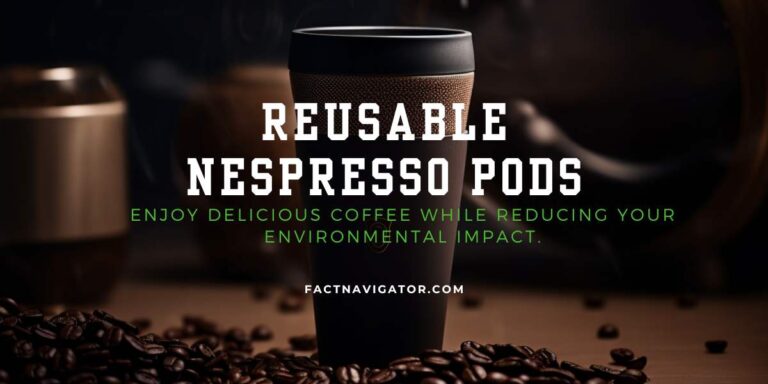Can You Recycle Styrofoam? The Truth & Sustainable Solutions

1. Understanding Styrofoam and its Recycling Challenges
1.1 What is Styrofoam and why is it different from other plastics?
Styrofoam, often used as a generic term, actually refers to expanded polystyrene (EPS), a specific type of plastic known for its unique properties. Unlike most plastics, EPS is not a solid material but rather a foam, meaning it’s filled with tiny air pockets. This air makes up around 95% of its volume, resulting in several key characteristics that differentiate it from other plastics:
- Lightweight: Due to its air-filled structure, EPS is incredibly lightweight, making it ideal for packaging applications where weight reduction is crucial.
- Insulating: The trapped air also provides excellent insulation properties, keeping food and beverages hot or cold during transport.
- Durable: Despite its light weight, EPS offers surprisingly good shock absorption and cushioning, protecting fragile items during shipping.
- Brittle: While offering some structural support, EPS is relatively brittle and can easily break into smaller pieces.
These characteristics make EPS widely used in various applications, including:
- Food packaging: Takeout containers, coffee cups, meat trays, disposable plates, and egg cartons.
- Protective packaging: Electronics, appliances, and furniture cushioning.
- Construction materials: Insulation panels, lightweight building components, and decorative moldings.
However, these same properties also pose significant challenges when it comes to recycling Styrofoam.
1.2 Why is recycling Styrofoam difficult?
Despite being categorized as plastic with the recycling symbol #6, EPS presents several logistical and economic hurdles that make its recycling process complex and often impractical:
Logistical Challenges:
- Low density: The high air content makes EPS bulky and space-consuming, requiring significantly more volume compared to its actual weight during transportation and processing. This translates to higher costs for collection and transportation compared to denser recyclables.
- Contamination risk: Due to its lightweight nature, EPS fragments easily and can blow away in the wind, contaminating recycling streams with other materials. Sorting and separating these tiny pieces from other recyclables is challenging and resource-intensive.
- Limited infrastructure: Most recycling facilities lack the specialized equipment needed to efficiently process EPS. Unlike other plastics that can be melted and reformed, EPS requires densification or specialized chemical recycling processes, which are not widely available.
Economic Considerations:
- Cost-ineffective processing: The combination of low density, high transportation costs, and specialized equipment requirements makes recycling EPS economically less viable compared to other recyclable materials. The cost of processing often outweighs the recovered material’s value.
- Limited demand for recycled EPS: Currently, there’s a limited market for recycled EPS products, further hindering the economic feasibility of large-scale recycling initiatives.
These challenges create a complex situation where, despite being technically recyclable, widespread and efficient recycling of Styrofoam remains an ongoing issue.
By understanding the unique properties and challenges associated with EPS, we can make informed choices about its use and explore alternative solutions for responsible waste management.
2. Can You Recycle Styrofoam in Your Curbside Bin? (Probably Not)
While the recycling symbol on many Styrofoam products might suggest otherwise, the reality is that most curbside recycling programs do not accept Styrofoam. This seemingly straightforward answer has complex reasons rooted in the limitations of current recycling infrastructure and economic considerations.
2.1 Why most curbside recycling programs don’t accept Styrofoam
There are several key factors contributing to the exclusion of Styrofoam from curbside recycling:
- Limited processing capabilities: As explained earlier, Styrofoam’s low density and bulky nature pose logistical challenges for recycling facilities. Most facilities lack the specialized equipment needed to efficiently sort, densify, or chemically recycle EPS. Integrating such processes can be expensive and impractical for many programs.
- Contamination risks: The lightweight and brittle nature of Styrofoam makes it prone to breaking into small pieces that can easily escape collection bins and contaminate other recyclables. Separating these tiny fragments from other materials is time-consuming and significantly reduces the quality of the recycled stream.
- Economic feasibility: The cost of collecting, transporting, and processing Styrofoam often outweighs the recovered material’s value. This economic reality disincentivizes many recycling programs from accepting EPS due to the financial burden it poses.
Therefore, placing Styrofoam in your curbside bin is generally not recommended. Doing so can contaminate the recycling stream and hinder the efficiency of the entire process.
2.2 How to identify if your local program accepts Styrofoam
While most programs don’t accept Styrofoam, there are a few exceptions. It’s crucial to check your local recycling guidelines before placing any material in your bin. Here are some tips to find out if your program accepts Styrofoam:
- Visit your waste management provider’s website: Most websites have dedicated sections outlining accepted materials and specific instructions for each item. Look for information about Styrofoam or EPS specifically.
- Check recycling bin labels or informational flyers: These often provide a list of accepted and prohibited materials.
- Contact your local waste management authority: If you’re unsure, they can clarify the specific guidelines for your area.
It’s important to remember that even if your local program accepts Styrofoam, there might be specific requirements for preparation, such as rinsing or breaking down large pieces. Always follow the provided instructions to ensure proper recycling practices.
By understanding the limitations of curbside recycling programs and taking the initiative to check local guidelines, you can make informed decisions about how to responsibly manage your Styrofoam waste. Remember, exploring alternative solutions like reuse, responsible disposal, or supporting initiatives advocating for improved Styrofoam recycling infrastructure are crucial steps towards a more sustainable future.
3. Alternatives to Throwing Away Styrofoam: Reduce, Reuse, Recycle (Responsibly)
While widespread recycling of Styrofoam remains a challenge, there are several alternative approaches we can adopt to manage this material responsibly and minimize its environmental impact. This three-pronged approach emphasizes reduction, reuse, and responsible recycling:
3.1 Reduce your reliance on Styrofoam whenever possible.
The most effective way to deal with waste is to avoid creating it in the first place. Here are some ways to reduce your reliance on Styrofoam:
- Choose alternative packaging: When shopping, opt for products packaged in more sustainable materials like paper, cardboard, or glass.
- Bring your own bags and containers: Carry reusable shopping bags and containers to avoid relying on single-use packaging at stores.
- Support businesses committed to sustainable practices: Look for businesses that use eco-friendly packaging and support their efforts to reduce waste.
- Reduce takeout and single-use food packaging: Opt for preparing meals at home or choosing restaurants that offer dine-in or bring-your-own container options.
By making conscious choices and adopting these simple practices, we can significantly reduce the demand for Styrofoam and contribute to a more sustainable future.
3.2 Repurpose Styrofoam for creative projects or practical uses.
Before discarding Styrofoam, consider giving it a second life through creative upcycling projects. Here are some ideas:
- Plant containers: Cut Styrofoam blocks into small pots for seedlings or use larger pieces to create raised garden beds.
- Packing materials: Reuse clean Styrofoam peanuts or pieces as cushioning material for fragile items when shipping or storing.
- Craft supplies: Use Styrofoam sheets for various craft projects like creating decorative ornaments, model building, or school art projects.
- Organizational tools: Cut Styrofoam pieces into organizers for drawers, toolboxes, or craft supplies.
Remember, only reuse clean and undamaged Styrofoam for these purposes.
3.3 Explore responsible recycling options when available.
If your local program accepts Styrofoam, it’s crucial to follow their specific guidelines for responsible recycling:
- Check for preparation requirements: Some programs might require rinsing, breaking down large pieces, or separating Styrofoam from other materials.
- Follow sorting instructions: Properly sort Styrofoam according to the program’s instructions to avoid contamination.
- Explore alternative drop-off locations: If curbside pickup isn’t available, look for designated drop-off centers or specialized recycling facilities that accept Styrofoam.
- Consider mail-in programs: Some organizations offer mail-in programs for specific types of Styrofoam, such as packing peanuts.
Remember, responsible recycling only applies when your local program has the infrastructure to handle Styrofoam effectively.
By adopting these alternatives and staying informed about local options, we can move towards a more sustainable future where Styrofoam waste is minimized and responsibly managed. Remember, even small changes in our individual habits can collectively create a significant impact on the environment.
4. The Future of Styrofoam Recycling: Innovation and Potential Solutions
While the current state of Styrofoam recycling presents challenges, researchers and innovators are actively exploring solutions for a more sustainable future. This section delves into emerging technologies and emphasizes the importance of collective action towards responsible waste management.
4.1 Emerging technologies for efficient Styrofoam recycling
Despite the hurdles, advancements in technology offer promising possibilities for overcoming the limitations of traditional Styrofoam recycling:
- Chemical recycling: This process breaks down EPS into its chemical building blocks, which can then be used to create new plastic products or other valuable materials. While still in its early stages, chemical recycling holds potential for efficient and economically viable processing of Styrofoam waste.
- Densification techniques: These methods involve compacting bulky EPS into smaller, denser volumes, significantly reducing transportation costs and facilitating easier handling in recycling facilities. Advancements in densification technologies can improve the feasibility of integrating Styrofoam into existing recycling infrastructure.
These are just a few examples, and ongoing research and development efforts are continuously exploring new and innovative solutions for efficient and sustainable Styrofoam recycling.
4.2 Advocating for sustainable practices and responsible waste management
While technological advancements hold promise, achieving a truly sustainable future for Styrofoam requires a multifaceted approach beyond solely relying on technological solutions. Here’s how you can contribute:
- Stay informed: Follow credible sources and research developments in Styrofoam recycling technologies and policy initiatives.
- Support sustainable businesses: Choose brands and companies committed to using eco-friendly packaging and responsible waste management practices.
- Advocate for change: Contact your local representatives and voice your support for policies promoting sustainable packaging options and improved recycling infrastructure for challenging materials like Styrofoam.
- Spread awareness: Educate others about the challenges of Styrofoam recycling and encourage them to adopt responsible waste management practices in their daily lives.
By combining individual efforts with technological advancements and policy changes, we can collectively work towards a future where Styrofoam waste is minimized, responsibly managed, and ultimately transformed into valuable resources. Remember, even small actions can contribute to a significant positive impact on the environment.
5. Conclusion: Making Informed Choices for a Sustainable Future
The complex issue of Styrofoam recycling highlights the challenges we face in managing waste responsibly and creating a more sustainable future. While widespread and efficient recycling of Styrofoam remains an ongoing pursuit, understanding the limitations and exploring alternative solutions are crucial steps towards responsible waste management.
By adopting sustainable habits like reducing reliance on single-use packaging, choosing reusable alternatives, and properly disposing of unavoidable waste, we can collectively minimize our environmental footprint. Additionally, supporting businesses committed to sustainable practices and advocating for policy changes that promote responsible waste management and innovative recycling solutions can create a larger positive impact.
Remember, every informed choice you make – from selecting products with eco-friendly packaging to exploring creative ways to reuse materials – contributes to a more sustainable future. By staying informed, making responsible choices, and actively supporting solutions, we can collectively work towards a cleaner and healthier environment for generations to come.





